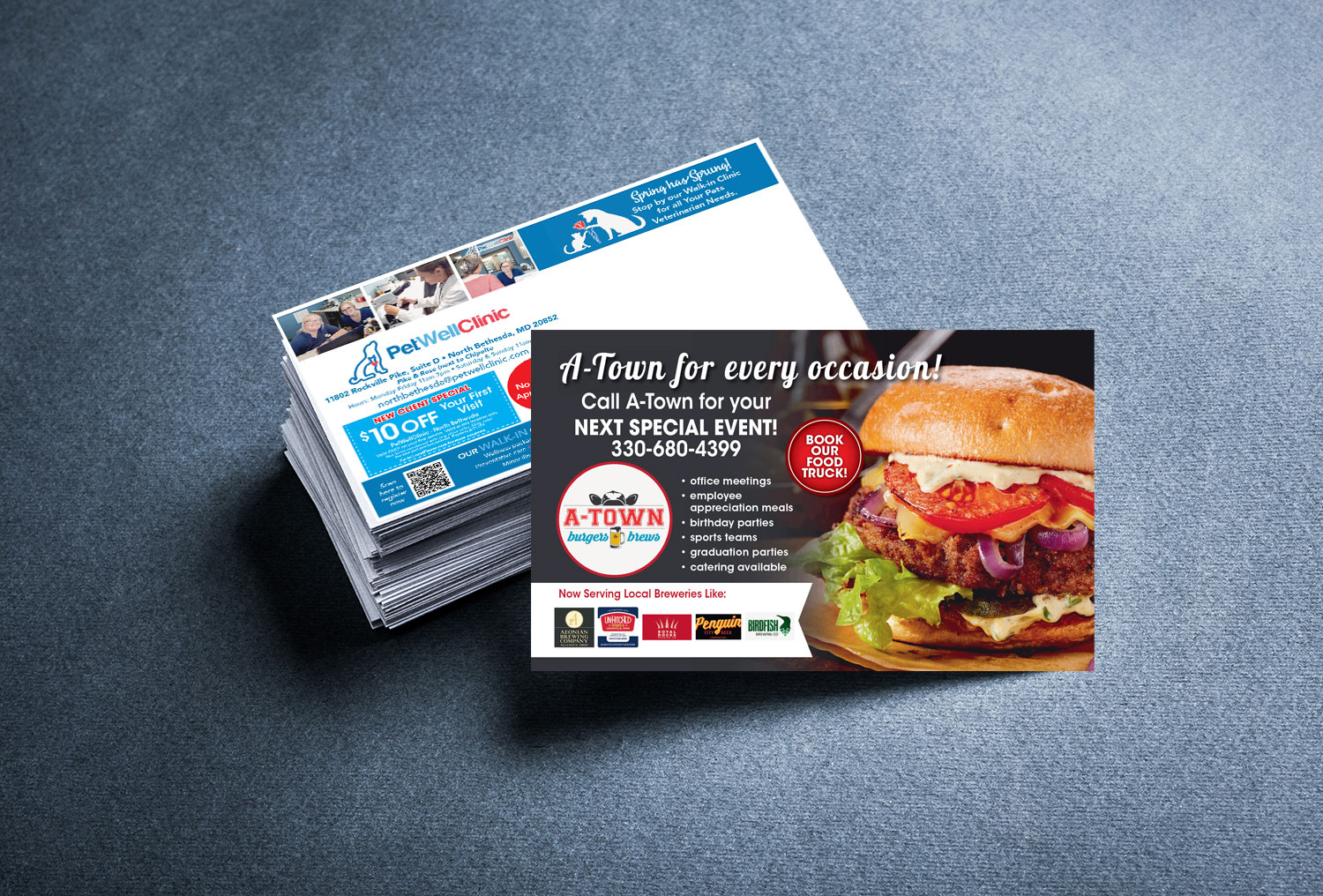Digital marketing is often hailed as the quintessential approach to business promotion, the enduring relevance and efficacy of direct mail, particularly in the form of postcards, can be surprisingly overlooked. For small businesses operating on limited budgets, finding cost-effective marketing strategies is not just a necessity; it’s a key component of their survival and growth. Direct mail postcards emerge as an unassuming hero in this context, offering a blend of affordability, simplicity, and effectiveness that few other marketing tools can match. This blog delves into the world of direct mail postcards, exploring why they are an invaluable asset for small businesses looking to make a big impact without breaking the bank.
The Appeal of Direct Mail Postcards
Tangible and Personal
Unlike digital ads that can be easy to ignore or lost in the noise of online traffic, direct mail postcards offer a tangible touchpoint with customers. They provide a physical connection in an increasingly virtual world, creating a memorable and personal experience that can foster stronger customer relationships.
High Visibility and Engagement
Postcards stand out in a typical stack of mail due to their size and design. They are often the first piece to be noticed when a customer sifts through their mail, leading to higher engagement rates compared to other forms of direct mail.
Cost-Effectiveness of Direct Mail Postcards
Low Production and Mailing Costs
Direct mail postcards are economical to produce. Their smaller size compared to other direct mail pieces means less material and lower printing costs. Additionally, postage for postcards is typically cheaper than for letters or packages, making them a budget-friendly option for mass mailing campaigns.
Targeted Marketing with Less Waste
Postcards allow for precise targeting, whether it’s based on geographic location, demographic profiles, or consumer behaviors. This targeted approach ensures that your marketing efforts are focused on the audience most likely to respond, reducing waste and improving ROI.
Simple Design and Messaging
The simplicity of a postcard’s design and messaging not only makes it cost-effective but also ensures clarity and impact. With limited space, messages must be concise and to the point, often leading to more effective communication.
Implementing Direct Mail Postcards in Your Marketing Strategy
Understanding Your Audience
Before launching a postcard campaign, it’s crucial to have a clear understanding of your target audience. This involves analyzing customer data to identify preferences, purchasing habits, and other relevant characteristics that will inform the design and messaging of your postcard.
Creating a Compelling Design and Message
The design of your postcard should be attention-grabbing yet aligned with your brand identity. Use high-quality images and a color scheme that resonates with your audience. The message should be clear, concise, and include a strong call-to-action (CTA) that prompts the recipient to take the next step, whether it’s visiting your website, making a purchase, or attending an event.
Measuring and Analyzing Results
To determine the effectiveness of your postcard campaign, it’s important to track key metrics such as response rates, conversion rates, and overall ROI. This data will not only show the success of the current campaign but also provide insights for future marketing efforts.
Real-World Success Stories
Numerous small businesses have reaped significant benefits from direct mail postcard campaigns. From local restaurants increasing foot traffic with promotional offers to retail stores boosting sales during holiday seasons, the success stories are diverse and inspiring. These examples serve as a testament to the power of well-executed direct mail postcards in driving business growth.
Challenges and Solutions
While direct mail postcards are cost-effective, challenges such as designing impactful content and ensuring timely delivery can arise. Overcoming these challenges involves strategic planning, creative thinking, and sometimes, leveraging the expertise of professional direct mail services.
The Future of Direct Mail Postcards
Adaptation to Technological Advancements
As we continue to navigate through the digital era, the realm of direct mail postcards is undergoing a significant transformation, shaped by the latest technological advancements. The evolution of printing technology, for instance, has opened new doors for customization and creativity in postcard design. Modern printing methods like digital printing allow for cost-effective, high-quality, and small-batch prints, making it easier for small businesses to experiment with various designs without incurring substantial costs.
Moreover, the integration of variable data printing (VDP) technology means that each postcard can be uniquely tailored to the individual recipient. Imagine a scenario where, instead of a generic greeting, each postcard addresses the recipient by name, or better yet, includes personalized offers based on their previous purchase history or browsing behavior. Such levels of personalization were once the domain of digital marketing but are now becoming increasingly feasible and common in direct mail.
Enhanced Targeting with Data Analytics
The future of direct mail postcards is also being reshaped by advancements in data analytics. Businesses are now able to harness the power of big data to gain deeper insights into customer behavior and preferences. This data-driven approach enables more precise targeting, ensuring that direct mail postcards reach the most receptive audience, thereby increasing the chances of engagement and response.
The use of analytics extends beyond just targeting; it also allows for the measurement and optimization of campaigns. By tracking key metrics such as response rates and conversions, businesses can fine-tune their strategies, experimenting with different designs, messages, and offers to see what resonates best with their audience.
Synergy with Digital Channels
Another exciting development is the increasing synergy between direct mail postcards and digital marketing channels. QR codes, for instance, can bridge the gap between the physical and digital worlds. A postcard recipient can be taken directly to a webpage, a video, or a social media platform by simply scanning a QR code, creating a seamless interactive experience.
Augmented Reality (AR) is also starting to find its way into direct mail postcards. By using AR, businesses can transform their postcards into immersive, interactive experiences. Imagine pointing your smartphone at a postcard and watching it come to life, displaying 3D models, animations, or even personalized video messages. This integration of AR not only captures the recipient’s attention but also significantly boosts engagement and memorability.
Sustainability Considerations
As environmental concerns continue to gain prominence, the future of direct mail postcards will also be influenced by the growing emphasis on sustainability. This shift is leading to the increased use of eco-friendly materials, such as recycled paper and soy-based inks, and more efficient, less wasteful printing processes. Businesses are becoming more conscious of their environmental footprint, and this is reflected in their choice of marketing materials and methods.
More Results With Fewer Costs
Direct mail postcards represent a golden opportunity for small businesses seeking impactful marketing solutions without a hefty price tag. Their ability to create a personal and memorable connection, combined with their cost-effectiveness, makes them an ideal tool for businesses operating with limited marketing resources. By effectively integrating direct mail postcards into their broader marketing strategies, small businesses can not only reach their target audience more effectively but also track and measure the success of their efforts, ensuring continuous improvement and growth.
As the business landscape becomes increasingly competitive, the simplicity, affordability, and effectiveness of direct mail postcards make them not just a viable option, but a strategic necessity for small businesses aiming to leave a lasting impression in the market.

